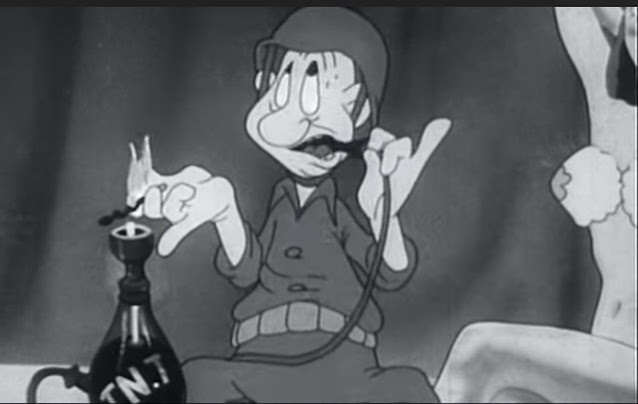A Massive Salvage Job!
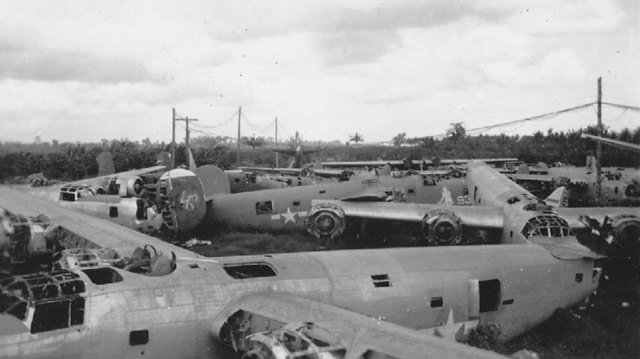 |
| B-24 bombers at Mokmer Field, Biak, Indonesia. |
A common question in military forums is what happened to all the military planes after World War II? Most weren't of military use any longer due to improving technology and a vastly reduced post-war military, so they littered airfields all around the world and within the United States.
It's difficult now to appreciate just how many planes were left over from the war. Production skyrocketed as the war went on. Production continued right up until the end of the war, and many brand-new planes were never even used. The United States alone produced 303,713 warplanes. While 21,583 (7.34%) were lost domestically during test flights, ferrying, training accidents, and the like, and another 43,581 were lost en route to the war and in overseas operations, that left a sizable number well in excess of 200,000.
So, let's take a look at their fates. I'm going to focus on US warplanes, but similar fates awaited discarded warplanes from other nations.
 |
| World War II planes being stored at Kingman AFB. There were roughly 5500 surplus aircraft there at one point. |
Most Warplanes Were Destined for the Scrapyard
While warplanes were made as quickly and cheaply as possible to meet the urgent national security need, they contained valuable materials. Thus, most planes were salvaged.
 |
| Dana Andrews walks through a "boneyard" while filming "The Best Years of Our Lives" (1946). This one was located at Ontario Army Airfield, California (located 1.6 km east of Ontario). |
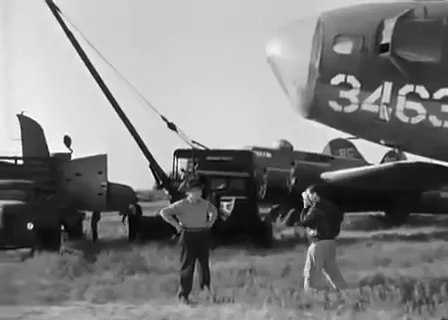 |
| "We're breaking them up" - the epitaph for most World War II warplanes. "The Best Years Or Our Lives" (1946). |
 |
| B-29 bombers in long-term storage at Davis-Monthan AFB a few years after World War II. Eventually, they were melted down like their predecessors except for some selected for museums. |
Airlines Bought Some Surplus Air Force Cargo Planes
During World War II, the Allies gave a lot of thought to the future of civil aviation in the post-war era. The Chicago Conference in 1944 led to the "Five Freedoms of the Air" (a play on President Franklin Roosevelt's famous "Four Freedoms"). These required reciprocal flyover and landing rights for international airlines and created the International Civil Aviation Organization as part of the United Nations. This regulated safety and set the standards for international air travel. L. Welch Pogue, chairman of the Civil Aeronautics Board, helped shape the Bermuda Agreement of 1946, which detailed routes, rates, and air rights between the United States and Great Britain. The world was ready to move and it didn't need old bombers to do so.
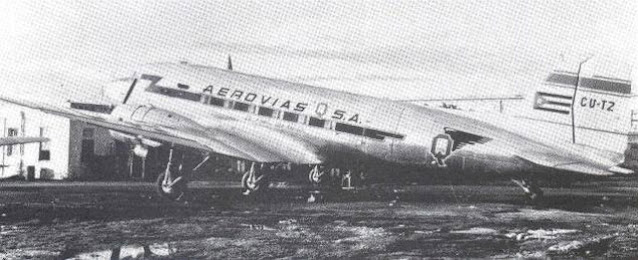 |
| A Cuban DC-3 in 1946. These planes were perfect for the short hop from Havana to Miami. |
The "Five Freedoms of the Air" and other innovations led to a post-war airline boom. Not all military aircraft were suitable for civilian use, but some were perfect for it. Over 10,000 Douglas DC-3 cargo planes were made for the military under the designations C-47, C-53, R4D, and Dakota, and most survived the war. While airlines had been buying DC-3s for years (it was actually a pre-war aircraft), many airlines saw a surge in business after the war and snapped them up. In fact, there were so many available that an improved version, the Super DC-3, failed to sell because there were so many surplus DC-3s available. Used DC-3s sold for their original 1930s price of about $60,000 - $80,000 into the 1960s.
 |
| Jimmy Stewart and his partner, Joe De Bona, with their P-52C fighter that has been converted to racing use (Allan Grant/LIFE Magazine). |
Private Collectors Bought Some Desirable Warplanes
Some World War II warplanes were sold to private collectors. They used them for personal use, commercial purposes, or in air races. The surplus planes were not expensive at all. Individuals could buy a BT-13 trainer for as little as $450 or a B-24 bomber for $13,750. That's right, you could buy your very own bomber for less than $15k. You just had to plunk down the cash and fly it out of there - if you knew how. Few took up the offer.
 |
| Jimmy Stewart posing in front of his very own P-51C "Thunderbird" ca. 1949, apparently after winning the Bendix Trophy. |
One such private collector was the actor and World War II hero James "Jimmy" Stewart. While Stewart flew bombers, not fighters, he picked up a war surplus P-51C through his company, Joe De Bona Racing Co. (Stewart was partners with pilot Joe De Bona). It took some time to convert the warplane to racing uses by removing the self-sealing fuel cells, the fuselage fuel tank, military propellers, and other specialized attributes, but it proved to be a profitable purchase. The plane, "Thunderbird," became the 1949 Bendix Trophy Race winner.
Another private collector was famed stunt pilot (and World War II veteran) Paul Mantz. He purchased a total of 475 wartime surplus bombers and fighters (including North American P-51C Mustang fighters) for $55,000 to use in film work. Mantz paid very little on a per-plane basis by buying in bulk, and he liked to joke that he had "the sixth-largest air force in the world." Like Stewart (who may have gotten the idea from him), Mantz also used one of his surplus P-51s to win the Bendix Trophy for three consecutive years (1946-1948). Ultimately, Mantz sold almost all of his war surplus planes for scrap to recover his initial investment and make a profit.
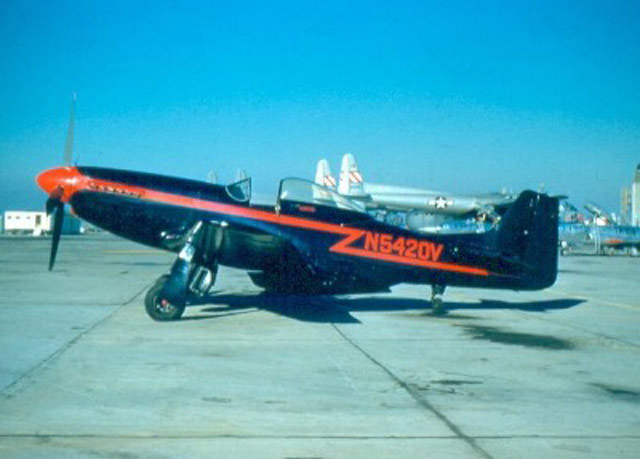 |
| A P-51D in private hands, seen at Oakland Airport in December 1958. |
So, the US Army Air Force sold even its latest fighters for surplus after the war. As Jimmy Stewart show, they could outfly any civilian aircraft. It's unlikely that you could buy a late-model USAF fighter today, but Elon Musk says the Russians will even sell their old ICBMs. Maybe a Mig fighter would do. However, there weren't enough collectors after World War II to keep many planes out of the boneyard.
 |
| A Forestry Service DC-3 drops seedlings to the Rio Grande National Forest in 1968. |
DC-3s In Other Government Uses
Just as some DC-3s were repurposed by civilian airlines, the United States Government also found new uses for some. The Forest Service used the DC-3 for smoke jumping and general transportation for decades. The last example was not retired until December 2015.
 |
| A P-51D Mustang in the Greek Air Force being used as a trainer, showing aviation cadet Othon Papadimitriou (Othon Papadimitriou Archive). |
Foreign Air Forces
Some warplanes gained an outsized reputation during World War II, which made them desirable to other countries' air forces. The Royal Hellenic Air Force (RHAF) (Greek), South African, and other air forces used them for years, even decades. It was not unusual to see military P-51s on foreign airfields into the 1970s. However, you couldn't give a Curtis P-40 or a P-38 Lightning away. |
| The National Museum of World War II Aviation has a large collection of World War II aircraft. |
A Few Warplanes Wound Up in Museums
There was not much demand at first from museums for World War II warplanes, but it has surged over time. Now, museums will go to great lengths and spend large sums of money to retrieve crashed planes from the bottom of the ocean or in the Arctic. The National Museum of World War II Aviation at an airport on the outskirts of Colorado Springs, Colorado, has probably the best collection of World War II military airplanes outside of the Smithsonian and perhaps a few other national museums. It is so popular that there are tentative plans to build a new home for it in downtown Colorado Springs.
The planes that wound up in museums often just missed the wrecker due to their fame. The two most famous World War II museum planes, "Enola Gay" and "Bockscar," dropped the atom bombs on Japan in 1945. They were both at Davis-Monthan at one point and, but for their notoriety, would have wound up in the smelter along with the thousands of other B-29s parked there.
 |
| P-51s in Korea in the early 1950s. |
Some World War II Planes Remained in the Air Force
Because the end of World War II coincided with the changeover to jet aircraft, most planes from that conflict already were obsolete when the war ended. Jet bombers and fighters were on the drawing boards and, in a few cases, already on the airfields. Some World War II planes remained in service, but, aside from cargo planes where speed was not a top priority, most were replaced quickly.
 |
| B-24 bombers in the boneyard. |
Conclusion
While World War II airplanes went to a variety of uses after the war, the vast majority were scrapped at central locations around the United States. They went on to new lives as the automobiles, toasters, and ovens that the post-war population wanted a lot more than now-useless military planes. |
| Curtis P-40 fighters stacked for disposal at Walnut Ridge AFB just after World War II. |
2021





